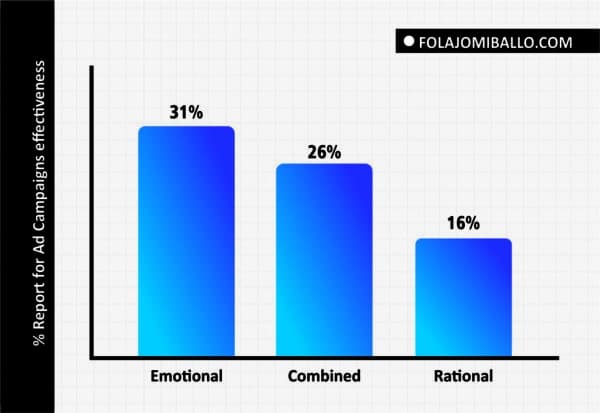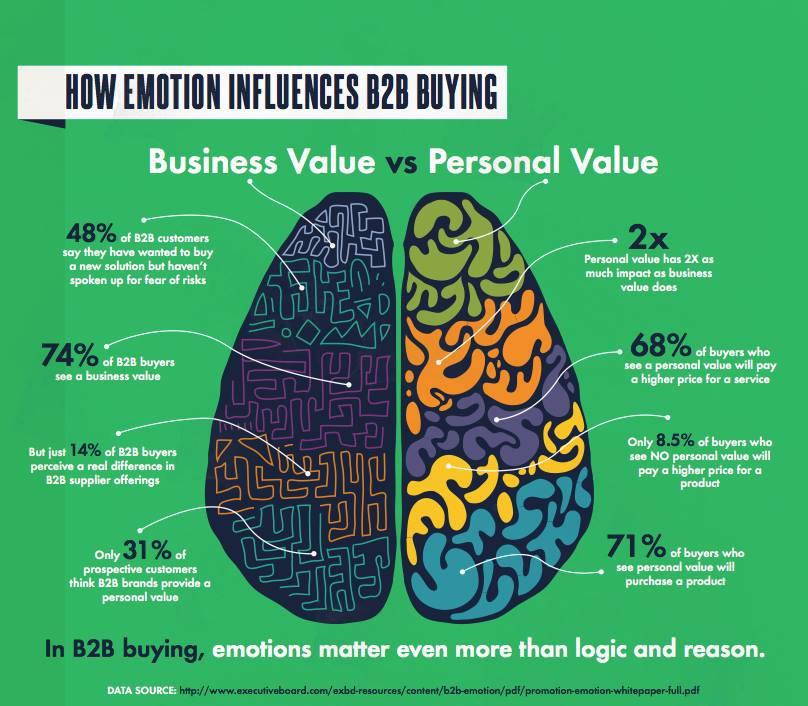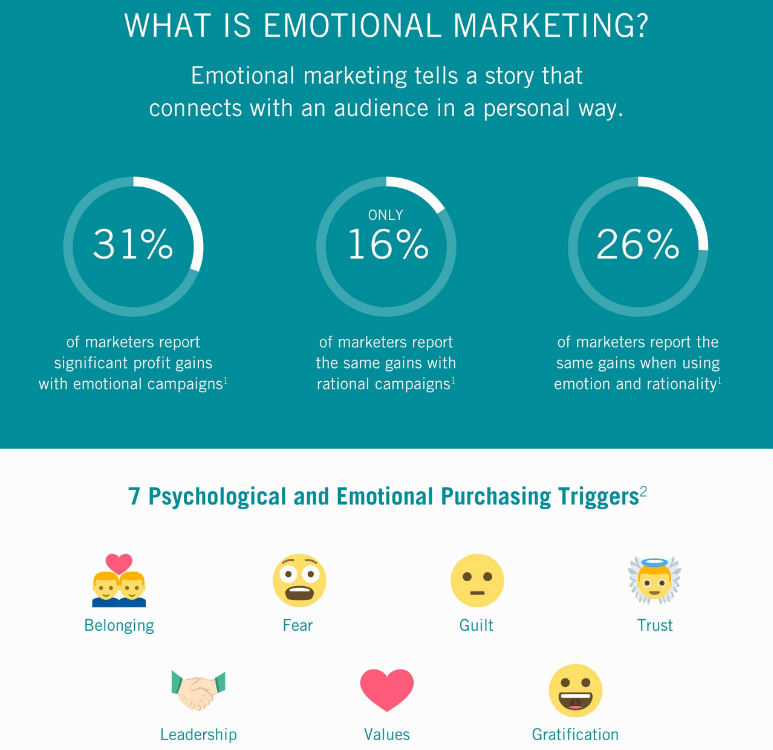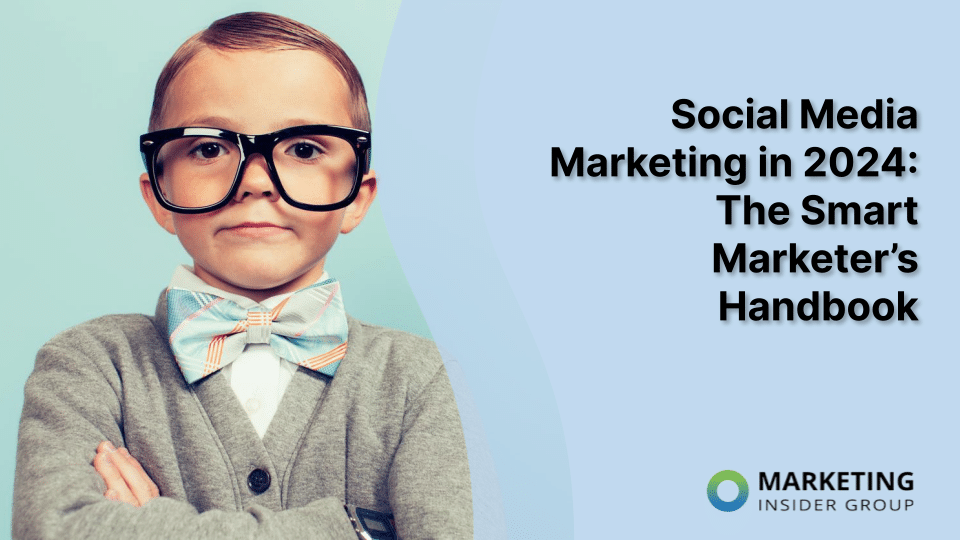
Emotional Marketing Is Smart; It Beats Promotion By 2X
“People will forget what you said, people will forget what you did, but people will never forget how you made them feel.” This Maya Angelou quote applies to marketing as well.
Emotional marketing campaigns perform better than factual ones by 2x, according to Fast Company data of over 2,000 advertising case studies. In the B2B world, Buyers feel like they don’t need your product as much as you think they do.
Harsh? Maybe, but true. 86% of B2B buyers believe that we are all selling basically the same stuff. They think we are all the same.
Today’s buyers are flooded with ads telling them otherwise. So they tune them out completely. When we need information to make a decision, we just go search for it. Buyers don’t necessarily need your products and they certainly don’t need your marketing campaigns.

But by tapping into their emotions, brands can reach buyers in the reptilian brain where they don’t even realize that they have fallen in love with what your brand means to them.
From promotion to emotion… Here’s what you need to know:
- Brands that can connect with their buyers on an emotional level will see 2 times more impact than marketers promoting products.
- “Features, functions and business outcome” marketing delivers a 21% lift in perceived brand benefits.
- “Professional, social and emotional benefits” marketing has a 42% lift (hence the 2x vs. business value).
- Buyers feel a much closer personal connection to B2B brands than to consumer brands.
The “Unique Selling Proposition” (USP) Is Dead

Think you’re unique? 86% of B2B buyers see “no real difference between suppliers” according to Gartner. But they are more attached to us emotionally. This is mainly due to the “perceived risks” inherent in the B2B purchase.
In other words, you will likely not lose your job for buying a hamburger at McDonalds but you might for buying the wrong internet router for your business.
Buyers are not listening to your unique selling proposition. They don’t believe it if you force them to listen. In fact, some research even suggests that buyers are less likely to consider a B2b brand based on how much promotional marketing they receive from them. So is it time for Emotional marketing?
What is Emotional Marketing?
Emotional marketing is a tactic used by marketers to connect with buyers in an emotional way. Emotional marketing uses storytelling to inspire feelings, align with values and soothe pain points so brands can form personal bonds with their audience.
Brands struggle with this despite the massive amount of data that’s available showing this to be an effective approach. Employee advocacy and influencer marketing campaigns are effective mainly because they tap into human desire to want to connect with people “just like me” or with people we already know.
For CMOs, marketers and communications professionals alike, it’s worth diving into this concept more in-depth so that we can better meet the demands of our customers.

How to Make B2B Marketing Personal
According to Gartner, marketers need to make their content more emotional:
- Understand customer personal goals and emotions.
- Use open observation of customers to spot non-verbal or contextual cues that reveal underlying emotions.
- Craft brand messages that convey personal value by using your customers’ natural language not your internal jargon.
- Keyword research is still a big part of the process to make sure you are seeing what terms will resonate with the larger market.
- Drive action by reminding buyers that their current pains are worse than the pain of change.
- Teach customers something new about their business needs then lead them to your differentiators.
Here are some approaches we’ve used to make marketing more emotional:
Focus on helping not selling
Does your content primarily promote something you sell, or solve a customer pain point? Your customers are asking questions every single day. Are you providing answers? How often you publish content says something about how much you are focused on your audience.
Apply elements of effective brand storytelling
Stories connect us on a deeply emotional level. But do you follow a standard storytelling framework:
- Make your customer the hero of the story (not your product)
- Marinate in the pain of their struggle. This helps them to see that you understand them. Don’t rush to the solution
- Send them on a journey. Map content to the early, middle, and late stages of the buyer journey.
- Be their guide. Every hero has a mentor. Show them stats and best practices. Share research and examples.
- Slay the monster / kill the villain. If your customer is the hero, then no action might be the villain. Show them the pain on non-action.
- Achieve resolution and send them home. Validate their decision by showing them proof points. Paint a picture of the ideal state.
Don’t be afraid to share strong opinions
I believe marketing needs a little more snark. But we have to be honest and authentic. Sometimes, I even allow typos. It helps me to rank for keywords other people are likely to mis-spell.
Focus on the Big 6 emotions
Anger, Sadness, Fear, Regret, Joy, and Love of course. Use action words like:
- Apply
- Join
- Hurry!
- Act quickly!
- Save your spot!
- Don’t miss out!
- Don’t be the last to join!
- Discover
- Explore
- Transform
- Jumpstart
- Accelerate
- Eliminate
- Reduce
Summing Up
“We would like to believe we’re logical creatures. But it turns out we’re not. It turns out like 95% of our decision making is actually emotional,” says Alicia Hatch, CMO, Deloitte Digital.
Marketers have been working to appeal directly to their customers’ emotional states, needs and aspirations since realizing doing so would have a direct impact on the customer journey. Research conducted by Forrester and inmoment stated that the number one driver of a great customer experience is having an established emotional connection. It may come as a surprise that people rely more heavily on emotion than the actual given information, but it’s now up to CMOs to use this data to build deeper trust with customers and convert prospects quicker.
This doesn’t happen overnight.
It happens over a lifetime. Brands are beginning to recognize more frequently that the customer lifecycle value must include more touchpoints that address the “feelings” of the customer journey.
The bottom line: emotional marketing is better than promotion. But your boss probably wants you to tell the world how awesome your company is anyway. But just try and sprinkle in some good old fashion helpful content along the way. Who knows, maybe that little effort will be more successful than all the rest.
And if you want to create helpful content for your business, check out our weekly blog service. We do the keyword research, headline creation, content writing and monthly reporting, so that you can focus on connecting at an emotional level with your customers!







Emotion evokes a response. Let’s say the ones great at it are beggers, they know that they won’t get anything unless they generate emotion.
That’s why Telus uses all the cute animals to make people smile.
There you go. Making people smile is a great way to people’s hearts and minds.
hi, Michael…. I fully agree with you i have been in B2B sales/marketing… this approch will lead to long term assocation with customer and they look at us consultant rather than just suppliers
Michael,
Great marketers like leaders need to connect with their audiences/customers. Your blog is spot on with the emotional side of marketing. As Maya Angelou said It’s all about how you make people feel. Storytelling is also a very effective way to connect.
Susanne
P.S. The connection needs to be heartfelt.
Thanks Susanne, I totally agree. I think it really starts with the intention. If you have the right goal (ie – to help your audience) then you can deliver on the promise of making real connections. Storytelling is just the vehicle but a really powerful one.